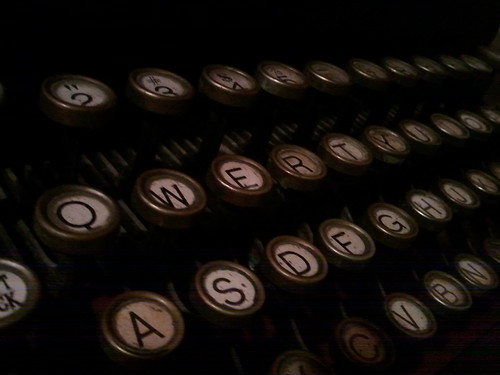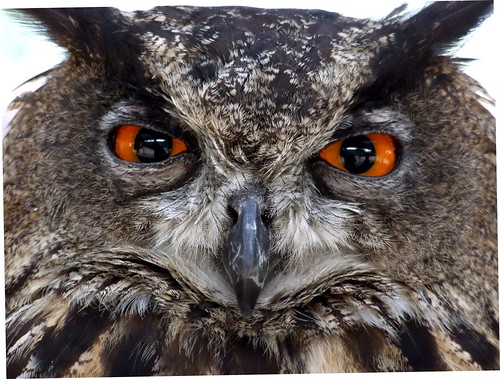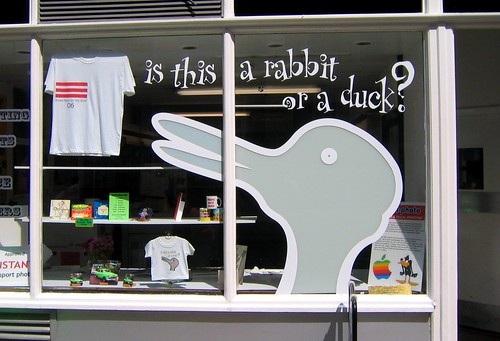Much of Elbow's writing reminded me of when I reviewed The Artist's Way Toolkit, especially when it comes to the habit and freedom of writing. Elbow insists on frequent (preferably daily) freewritings where you must keep writing, even if you only write "I have nothing to say" over and over again.
My favorite part, though, wasn't his methods or his suggestions (though I think both have value and have made me consider ways to change my classroom, especially when it comes to peer review). My favorite part was his use of metaphor.
Elbow weaves metaphors into his work constantly, and they are always beautiful and striking. I started marking them as I read.
On writing generally:
Writing is like trying to ride a horse which is constantly changing beneath you, Proteus changing while you hang on to him. You have to hang on for dear life, but not hang on so hard that he can't change and finally tell you the truth.On actively producing writing:
Producing writing, then, is not so much like filling a basin or pool once, but rather getting water to keep flowing through till finally it runs clear.
On sending out writing without getting feedback from the reader:
Writing is a string you send out to connect yourself with other consciousnesses, but usually you never have the opportunity to feel anything at the other end. How can you tell whether you've got a fish if the line always feels slack?On taking all criticism (good and bad) during peer review:
Listen to what they say as though it were all true. The way an owl eats a mouse. He takes it all in. He doesn't try to sort out the good parts from the bad.
The Power of Metaphor
I love metaphors, and I've always been highly receptive to them. I talk to myself in metaphors a lot. I use them to gain perspective and understanding, and I think they are highly valuable thinking tools.
It wasn't until reading this book, though, that I understood how much metaphor is connected to my interest in agonism and using conflict productively.
Elbow's process for writing has two primary components: cooking and growing. Growing has to do with generating ideas, and his primary vehicle for this is forcing yourself to write crap so that you can get to your good ideas. But he admits that you also need to let things percolate, simmer, cook. In order to get an idea to be any good, it needs some time in the oven.
His notion of cooking seems to me very tied into the idea of agonism. "Cooking," he says "is the interaction of contrasting or conflicting material." He urges writers not to force themselves into moderation too soon, insisting that the tension between extremes is a productive space. When something cooks there is something "being transformed by interacting with another: one piece of material being seen through the lens of another, being dragged through the guts of another, being reoriented or reorganized in terms of the other, being mapped onto the other."
He never uses the term "agonism," but that's what he's describing. It's a transformation that can only take place through the tension of difference. Only when two conflicting views come into contact can this catalyst for change occur. Each view takes something from the other and comes out different (and better) on the other side.
One of his strategies for getting things cooking is to use metaphors:
Elbow's process for writing has two primary components: cooking and growing. Growing has to do with generating ideas, and his primary vehicle for this is forcing yourself to write crap so that you can get to your good ideas. But he admits that you also need to let things percolate, simmer, cook. In order to get an idea to be any good, it needs some time in the oven.
His notion of cooking seems to me very tied into the idea of agonism. "Cooking," he says "is the interaction of contrasting or conflicting material." He urges writers not to force themselves into moderation too soon, insisting that the tension between extremes is a productive space. When something cooks there is something "being transformed by interacting with another: one piece of material being seen through the lens of another, being dragged through the guts of another, being reoriented or reorganized in terms of the other, being mapped onto the other."
He never uses the term "agonism," but that's what he's describing. It's a transformation that can only take place through the tension of difference. Only when two conflicting views come into contact can this catalyst for change occur. Each view takes something from the other and comes out different (and better) on the other side.
One of his strategies for getting things cooking is to use metaphors:
Make as many metaphors as you can . . . When you make a metaphor, you call something by a wrong name. If you make a comparison, an analogy, or an example, you are thinking of something in terms of something else. There is always a contradiction.I use metaphors all the time, but I had never explicitly thought of their use in this way. To use a metaphor is to force a contradiction to an agonistic conclusion. By saying that writing is like a shape-shifting horse or that taking criticism is like an owl eating a mouse, Elbow is forcing his readers to take two ideas that are in contradiction and resolve the tension. The process leaves them with a better understanding of a concept that was fuzzy before, and that understanding can only happen because of the reaction--the cooking--between the two contradictory ideas.
The Duck or the Rabbit
I was really excited when I read this because it makes sense to me in a concrete way and it harkens back to a research interest of mine from the very beginning of my graduate school days (which now seems like eons ago).
One place that we see this metaphorical, agonistic tension arise is in optical illusions. Elbow talks about these as "gestalts," images that allow us "to see it as coherent instead of just disconnected, buzzing, blooming marks." He gives the example of an image that can be seen as two vases or as two faces. My favorite example is the duck-rabbit image.
I used this metaphor (which I found in Wayne Booth's work) to discuss the tension in criticism of Chappelle's Show and--later--The Wire.
Some people (including, apparently, Dave Chappelle himself) saw some of the skits on Chappelle's Show as offensive. Some people saw them as funny. But it was when someone could see both and jump back and forth between them, act within that conflicted space, that the show took on the potential for social activism. Change comes out of conflict. Better ideas cook under pressure.
You may see a rabbit in the picture above. You may see a duck. But once you have seen both a rabbit and a duck, you can never see the picture the same way again. It is forever changed by the interaction between your two perspectives. You now see it as a third, wholly new, thing. You now see it as an optical illusion.
Elbow, using another metaphor to do so, gets to the heart of this matter in the book:
We are like rats who have been taught to see rectangles and circles. But what happens when they show us an ellipse? If it is a long pointy ellipse we see a rectangle. If it is a round, mild ellipse, we see a circle. Ellipses we don't see. Ellipses don't exist for us.But, of course, ellipses do exist. Or, rather, they exist as much as a "rectangle" or a "circle," which are all just words that we have used to collectively designate a certain feature of our shared reality. If we create a word for it and are able to use it with other people, the term (and thus our ability to see it and differentiate it) exists.
Calling a thing by the wrong name, as Elbow puts it, allows us to create that tension intentionally. We are able to call upon the agonistic force that brings things into sharper focus. A metaphor is a tool for harnessing that power.
Metaphors in the Classroom
The place where I use metaphors most frequently is my writing classroom. In fact, after reading Elbow's book last night, I caught myself making three separate metaphors in the class I taught today. I didn't realize how often I drop them into my class discussions, but now that I'm thinking about it, I call upon them frequently.
I hope that I am using them effectively to draw students into that conflicted space where they can begin to see writing (and their own abilities and processes) more clearly. Upon some reflection, I think I layer in multiple metaphors in a single discussion (a technique Elbow uses in his book, too, often stacking several metaphors together in a single paragraph to illustrate the same phenomenon in writing). I'm doing this in the hopes that one of them will resonate. Not all of my students come into the classroom with the same experiences or interests, and throwing out lots of metaphors gives them multiple places to enter into that conflicted space and begin the work of cooking their own ideas on writing.
After some reflection on this, I decided to make it a short (unlike this rambling mess of reflection here) series on Something's Developing, my other blog where I write about teaching developmental English. I'm going to try to capture some of the metaphors I use in the classroom and those that I've read in other places, including any you'd like to submit for inclusion.
What metaphors for writing do you think I should add?
Photo: Mike McKay, ArcheiaMuriel, jennicatpink, Rich Watts





No comments:
Post a Comment